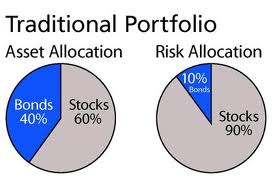Analysis of Credit Risk Grading:
INTRODUCTION:
Credit risk grading is an important tool for credit risk management as it helps the Banks & financial institutions to understand various dimensions of risk involved in different credit transactions. The aggregation of such grading across the borrowers, activities and the lines of business can provide better assessment of the quality of credit portfolio of a bank or a branch. The credit risk grading system is vital to take decisions both at the pre-sanction stage as well as post-sanction stage.
At the pre-sanction stage, credit grading helps the sanctioning authority to decide whether to lend or not to lend, what should be the loan price, what should be the extent of exposure, what should be the appropriate credit facility, what are the various facilities, what are the various risk mitigation tools to put a cap on the risk level.
At the post-sanction stage, the bank can decide about the depth of the review or renewal, frequency of review, periodicity of the grading, and other precautions to be taken.
DEVELOPMENT OF THE SCORE CARD:
The Lending Risk Analysis (LRA) manual introduced in 1993 by the Bangladesh Bank has been in practice for mandatory use by the Banks & financial institutions for loan size of BDT 1.00 crore and above. However, the LRA manual suffers from a lot of subjectivity, sometimes creating confusion to the lending Bankers in terms of selection of credit proposals on the basis of risk exposure. Meanwhile, in 2003 end Bangladesh Bank provided guidelines for credit risk management of Banks wherein it recommended, interalia, the introduction of Risk Grade Score Card for risk assessment of credit proposals.
Since the two credit risk models are presently in vogue, the Governing Board of Bangladesh Institute of Bank Management (BIBM) under the chairmanship of the Governor, Bangladesh Bank decided that an integrated Credit Risk Grading Model be developed incorporating the significant features of the above mentioned models with a view to render a need based simplified and user friendly model for application by the Banks and financial institutions in processing credit decisions and evaluating the magnitude of risk involved therein.
DEFINITION OF CREDIT RISK GRADING (CRG):
The Credit Risk Grading (CRG) is a collective definition based on the pre-specified scale and reflects the underlying credit-risk for a given exposure.
A Credit Risk Grading deploys a number/ alphabet/ symbol as a primary summary indicator of risks associated with a credit exposure.
Credit Risk Grading is the basic module for developing a Credit Risk Management system.
FUNCTIONS OF CREDIT RISK GRADING:
Well-managed credit risk grading systems promote bank safety and soundness by facilitating informed decision-making. Grading systems measure credit risk and differentiate individual credits and groups of credits by the risk they pose. This allows bank management and examiners to monitor changes and trends in risk levels. The process also allows bank management to manage risk to optimize returns.
USE OF CREDIT RISK GRADING:
The Credit Risk Grading matrix allows application of uniform standards to credits to ensure a common standardized approach to assess the quality of individual obligor, credit portfolio of a unit, line of business, the branch or the Bank as a whole. As evident, the CRG outputs would be relevant for individual credit selection, wherein either a borrower or a particular exposure/facility is rated. The other decisions would be related to pricing (credit-spread) and specific features of the credit facility. These would largely constitute obligor level analysis. Risk grading would also be relevant for surveillance and monitoring, internal MIS and assessing the aggregate risk profile of a Bank. It is also relevant for portfolio level analysis.
NUMBERS AND SHORT NAME OF GRADES USED IN THE CRG:
The proposed CRG scale consists of 8 categories, of which categories 1 to 5 represent various grades of acceptable credit risk and categories 6 to 8 represent unacceptable levels of credit risk.
| GRADING | SHORT NAME | NUMBER |
| Superior | SUP | 1 |
| Good | GD | 2 |
| Acceptable | ACCPT | 3 |
| Marginal/Watchlist | MG/WL | 4 |
| Special Mention | SM | 5 |
| Sub standard | SS | 6 |
| Doubtful | DF | 7 |
| Bad & Loss | BL | 8 |
RISK DEFINITIONS:
Bangladesh bank has set different criteria for risk grading definitions. However, they can be broadly categorized as:
a) Acceptable Credit Risk and
b) Unacceptable Credit Risk
Following is a detailed discussion of these two broad categories of risks.
ACCEPTABLE CREDIT RISK:
The following 5 categories are considered as acceptable credit risk. The respective risk category features have been provided below:
Superior – (SUP) – 1
- Credit facilities, which are fully secured i.e. fully cash covered.
- Credit facilities fully covered by government guarantee.
- Credit facilities fully covered by the guarantee of a top tier international Bank.
Good – (GD) -2
- Strong repayment capacity of the borrower
- The borrower has excellent liquidity and low leverage.
- The company demonstrates consistently strong earnings and cash flow.
- Borrower has well established, strong market share.
- Very good management skill & expertise.
- All security documentation should be in place.
- Credit facilities fully covered by the guarantee of a top tier local Bank.
Aggregate Score of 85 or greater based on the Risk Grade Score Sheet
Acceptable – (ACCPT) -3
- These borrowers are not as strong as GOOD Grade borrowers, but still demonstrate consistent earnings, cash flow and have a good track record.
- Borrowers have adequate liquidity, cash flow and earnings.
- Credit in this grade would normally be secured by acceptable collateral (1st charge over inventory / receivables / equipment / property).
- Acceptable management
- Acceptable parent/sister company guarantee
Aggregate Score of 75-84 based on the Risk Grade Score Sheet
Marginal/Watchlist – (MG/WL) -4
- This grade warrants greater attention due to conditions affecting the borrower, the industry or the economic environment.
- These borrowers have an above average risk due to strained liquidity, higher than normal leverage, thin cash flow and/or inconsistent earnings.
- Weaker business credit & early warning signals of emerging business credit detected.
- The borrower incurs a loss
- Loan repayments routinely fall past due
- Account conduct is poor, or other untoward factors are present.
- Credit requires attention
Aggregate Score of 65-74 based on the Risk Grade Score Sheet
Special Mention – (SM) -5
- This grade has potential weaknesses that deserve management’s close attention. If left uncorrected, these weaknesses may result in a deterioration of the repayment prospects of the borrower.
- Severe management problems exist.
- Facilities should be downgraded to this grade if sustained deterioration in financial condition is noted (consecutive losses, negative net worth, excessive leverage),
An Aggregate Score of 55-64 based on the Risk Grade Score Sheet.
UNACCEPTABLE CREDIT RISK:
The following 3 categories are considered as unacceptable credit risk. The respective risk category features have been provided below:
Substandard- (SS) – 6
- Financial condition is weak and capacity or inclination to repay is in doubt.
- These weaknesses jeopardize the full settlement of loans.
- Bangladesh Bank criteria for sub-standard credit shall apply.
An Aggregate Score of 45-54 based on the Risk Grade Score Sheet.
Doubtful- (DF) – 7
- Full repayment of principal and interest is unlikely and the possibility of loss is extremely high.
- However, due to specifically identifiable pending factors, such as litigation, liquidation procedures or capital injection, the asset is not yet classified as Bad & Loss.
- Bangladesh Bank criteria for doubtful credit shall apply.
An Aggregate Score of 35-44 based on the Risk Grade Score Sheet.
Bad/Loss- (BL) -8
- Credit of this grade has long outstanding with no progress in obtaining repayment or on the verge of wind up/liquidation.
- Prospect of recovery is poor and legal options have been pursued.
- Proceeds expected from the liquidation or realization of security may be awaited. The continuance of the loan as a bankable asset is not warranted, and the anticipated loss should have been provided for.
- This classification reflects that it is not practical or desirable to defer writing off this basically valueless asset even though partial recovery may be affected in the future. Bangladesh Bank guidelines for timely write off of bad loans must be adhered to. Legal procedures/suit initiated.
- Bangladesh Bank criteria for bad & loss credit shall apply.
An Aggregate Score of less than 35 based on the Risk Grade Score Sheet.
REGULATORY DEFINITION ON GRADING OF CLASSIFIED ACCOUNTS :
Irrespective of credit score obtained by a particular obligor, grading of the classified names should be in line with Bangladesh Bank guidelines on classified accounts, which presently are:
- Sub standard – if any loan is past due/overdue for 180 days and above.
- Doubtful – if any loan is past due/overdue for 270 days and above.
- Bad & Loss – if any loan is past due/overdue for 360 days and above.
PROCEDURE FOR COMPUTING CREDIT RISK GRADING:
The following step-wise activities outline the detail process for arriving at credit risk grading.
STEP I: IDENTIFYING ALL THE PRINCIPALS RISK COMPONENTS:
Credit risk for counterparty arises from an aggregation of the following:
- Financial Risk
- Business/Industry Risk
- Management Risk
- Security Risk
- Relationship Risk
Each of the above mentioned key risk areas require to be evaluated and aggregated to arrive at an overall risk grading measure.
Evaluation of Financial Risk:
Risk that counterparties will fail to meet obligation due to financial distress. This typically entails analysis of financials i.e. analysis of leverage, liquidity, profitability & interest coverage ratios. To conclude, this capitalizes on the risk of high leverage, poor liquidity, low profitability & insufficient cash flow.
Evaluation of Business/Industry Risk:
Risk that adverse industry situation or unfavorable business condition will impact borrowers’ capacity to meet obligation. The evaluation of this category of risk looks at parameters such as business outlook, size of business, industry growth, market competition & barriers to entry/exit. To conclude, this capitalizes on the risk of failure due to low market share & poor industry growth.
Evaluation of Management Risk:
Risk that counterparties may default as a result of poor managerial ability including experience of the management, its succession plan and team work.
Evaluation of Security Risk:
Risk that the bank might be exposed due to poor quality or strength of the security in case of default. This may entail strength of security & collateral, location of collateral and support.
Evaluation of Relationship Risk:
These risk areas cover evaluation of limits utilization, account performance, conditions/covenants compliance by the borrower and deposit relationship.
















